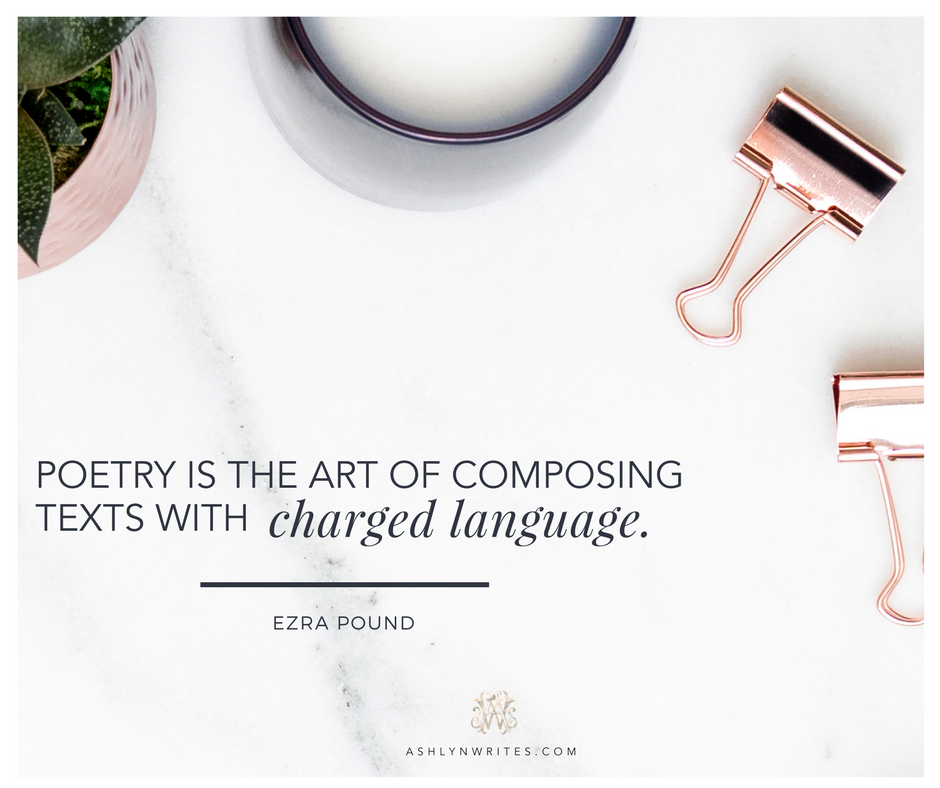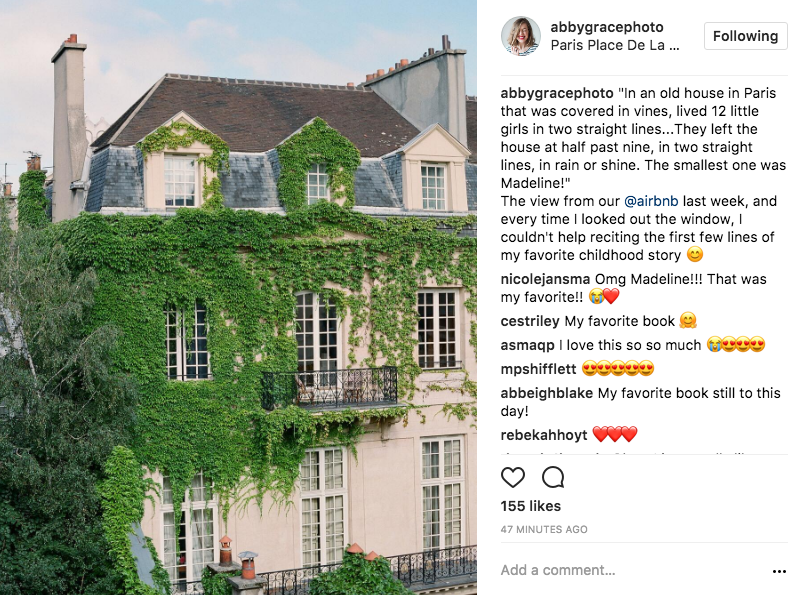I read all the time and take words apart to see how they work. I’m a word person.
Clearly, I take words apart and put them together again to see how the world works: it’s how I need to process the world.
I scurry to my journal the moment my mood changes, meeting myself with it in hand every morning. Etymology fascinates me most when I’m studying Scriptures (“that Greek word means WHAT?!”) and my love language is—surprise—words of affirmation.
So that said, today, I want to bring the pretentious posturing that the phrase “poetic device” may have on you back to earth, ok?

I hearby promise this won’t be pie-in-the-sky, and instead, I want to give you 20 poetic devices for copywriting you can turn around and use in your creative business blog, newsletter copy, Instagram captions, and more!
I realize I’m a bit loony for vocabulary, but I promise you, promise you, promise you*, that you CAN use poetic devices in your copywriting for your creative small business.
Ok?
Today, you’ll learn:
- Why you should give literary devices a whirl in your copy
- 8 ways poetic device can help your copy
- 20 devices (and their examples) for you to implement today
*a-hem, repetition ????
Similarities in Poetry & Copywriting
In a nutshell, here’s why it’s important for you to use a touch of literary devices in as a creativepreneur … thus the chief copywriter for your business.

Many creatives (and content creators in general) are tradesmen first, copywriters second: your authority and expertise likely lies in something other than syntax. And that’s ok.
BUT.
Literary and poetic devices are a GREAT way to add style to your blogs and copywriting …
.. because if you’ve got style, you’ll stand out in a content-filled world.
In a word, a poem is just pattern that puts emotion into word: From juicy Instagram posts that drip with language to something, they can all have little bits of poetic devices tossed in like sea salt.
Poetic device in your copy does things like:
- Speaks to human needs and wants
- Inspires thinking and doing
- Deals in tight, well-crafted units
- Make it easy to share and pass on information
- Make it so you can hear someone speaking through the words—and right to you.
- Are (usually) stickier in our brains or are easy to memorize
- Makes use of line breaks ????????
- Enable you to mean more than one thing with fewer words
In sum, here’s a good way to think about it: a good copywriter takes poetry and slices and dices it: at the end of the day, clear trumps clever in copy.
“Most good copywriters . . . fall into two categories. Poets. And killers. Poets see an ad as an end. Killers as a means to an end.’ If you are both killer and poet, you get rich.” – David Ogilvy
Clever, according to famed copywriter Ogivly, shouldn’t ever get in the way of your sale.
[bctt tweet=”Clever shouldn’t ever get in the way of your sale.” username=”via AshlynSCarter”]
Ready to figure out what this could look like applied to your creative business?
20 Poetic Tools & Techniques to Steal for Your Copy
Okay, let’s get technical, technical!

I know, I know. Bad pun.
Essentially, the poetic tools I’m handing over here are just fancy-pants words for devices you already know of. Here are their three buckets of classy names, and I’ll break it down further below:
- Phanopopei – Imagery
- Melopoeia – Sound
- Logopoeia – Mental associations (ex. how when I say “apple,” you think things like “ … a day keeps the doctor away” or “Adam and Eve” or something)
Let’s break those 3 big buckets down.
Don’t forget your free cheatsheet of all 20 of these, so you can pocket it in a notebook and use later! ????????
Phanopoia
With imagery, you can invoke the senses with smell, taste, and texture words.
“… a glass of lemonade on a hot summer day”
Use figurative language to say one thing … but mean another.
Simile: comparison that uses like or as
“Her romantic mind was like the tiny boxes, one within the other, that come from the puzzling East . . .” — Peter Pan, by J. M. Barrie.
Metaphor: comparison between 2 things
Melopeia
Create a cadence and melody of words with rhythm.
Think anything iambic pentameter. I know she’s just quoted a book, but look what my friend and client Abby Grace Photography posted below. That’s interesting … it’s stuck with her for decades (p.s. There’s also rhyme here, more on that in a sec.).

Echo a vowel+consonent (or just a vowel) for rhyme.
home + some are slant rhyme
tiny + wiry are slight rhyme
down + done are consonant rhyme
mouse + house are exact rhyme (like this Delta Air Lines screengrab)

Repeat beginning consonants with alteration.
Here’s an example with the Delta Air Lines tagline … and I’M DONE. No more Delta references (for today, at least).

Repeat the first word or phrase at the start of successive lines for anaphora.
My friend (she’s a writer by trade) Ashley Beaudin posted this on Instagram tonight, and started a few sentences with “I got to … ” Boom: anaphora.

Repeat words at the ends of lines for epistrophe.
‘Cause if you liked it then you should have put a ring on it,
If you liked it then you should’ve put a ring on it,
Don’t be mad once you see that he want it,
If you liked it then you should’ve put a ring on it.
-Beyonce (too easy)
Logopoeia
Play with the tone of how you say something, like brand voice.
For instance, MailChimp’s voice is different from Convertkit
Paronomasia is a type of pun that means to play on words that are alike in sound, and different in meaning.

Antanaclasis is a type of pun that means to repeat words, but with different meanings.
Ex. “We’re a different KIND of business: A business built on kindness.”
– Kind Bars
Use a verb to connect 2+ objects with a pun technique called syllepsis.
“When I address Fred I never have to raise either my voice or my hopes.”
-E.B. White, “Dog Training”
Use the same, exact parallel structure in two sentences, with isocolon technique.
“It was the best of times, it was the worst of times.”
-Charles Dickens
OR

Repeat conjunctions for polysyndeton parallelism.
“If there be cords, or knives, or poison, or fire, or suffocating streams, I’ll not endure it”
Shakespeare, Othello
*Note: I always use this technique writing launch funnels for clients, about the time I’m really trying to drive up those pain points of their target audience!
Try some antithesis by juxtapositioning conflicting ideas.
“To err is human; to forgive divine.”
“Give every man thy ear, but few thy voice.”
“Many are called, but few are chosen.”
Bottom line, don’t be a mother goose, or sing-songy, and you’ll be non-cheesy! Break it, slant
Break your copy, slant rhyme it, and don’t be afraid to try something new. People tend to remember the feel they got reading something less often than the stark black and white words on paper.
Grab the printable version of these (plus the examples) so you can use ’em in your own business!
Reading Time: 6 MinutesReading time: 5 min. I read all the time and take words apart to see how they work. I’m a word person. Clearly, I take words apart and put them together again to see how the world works: it’s how I need to process the world. I scurry to my journal the moment my mood […]




This is fantastic Ashlyn! It’s funny…I see that I naturally do some of these things but not others. IT will be fun to play around with this and try to incorporate them more. Thanks!
Oh boy, oh boy! Cari, I’m so glad it wasn’t too nerdy or weird—and yes, I do some of them naturally too, but don’t even realize it … and then others I should use for a writer’s block tool. 🙂 Thank you for your comment!
Thanks for breaking these down Ashlyn! It was great to see real life examples, such as the ones you included from Delta LOL, and see these poetic devices in copywriting action.
You are so welcome! Haha–those Delta ones may always come a little more naturally to me. 😉
[…] What literary techniques are you going to use to emulate this type of tone? Check out this list of techniques you could draw from and take a look through examples of literary techniques at work in copywriting. […]